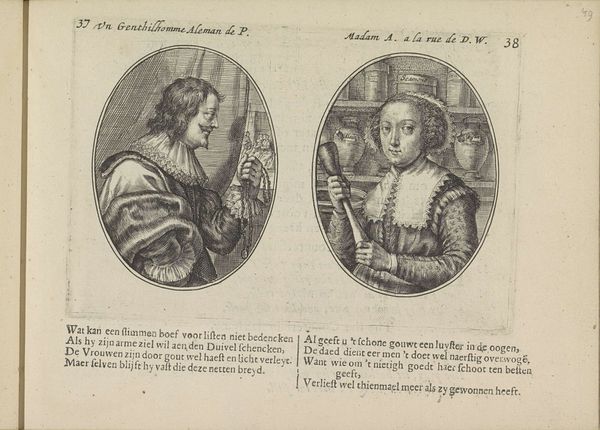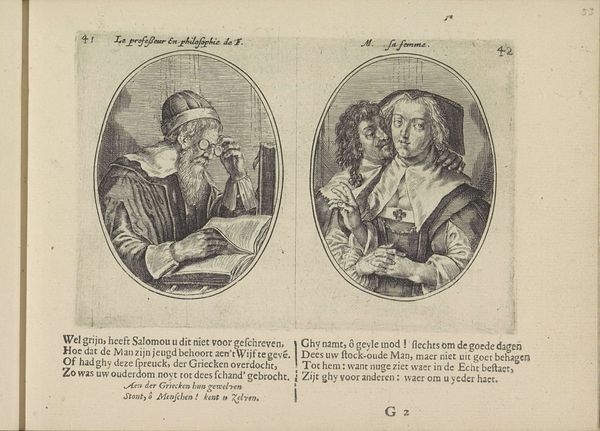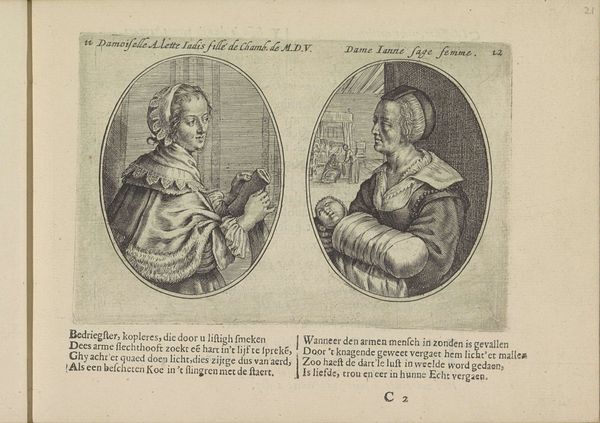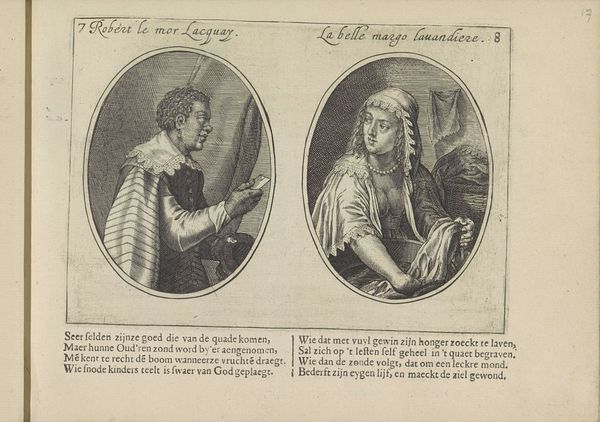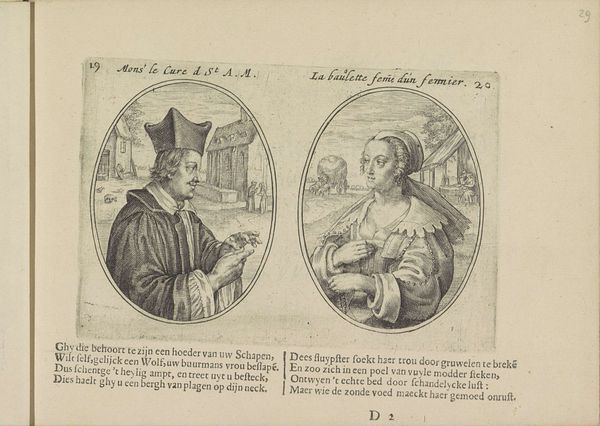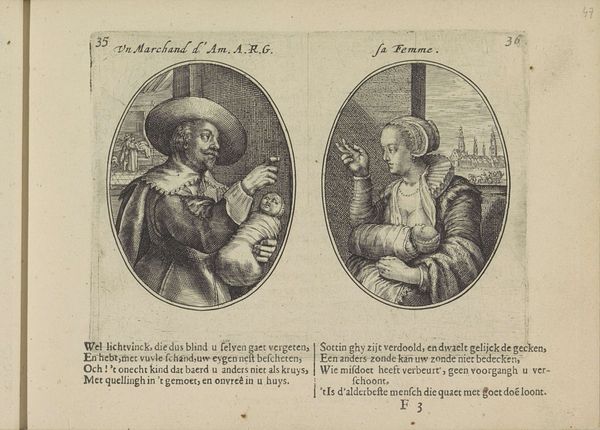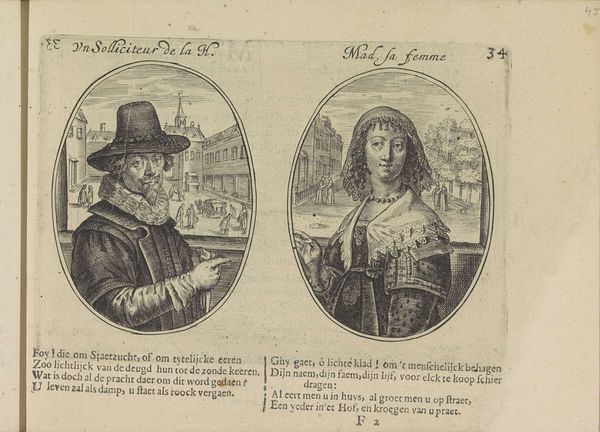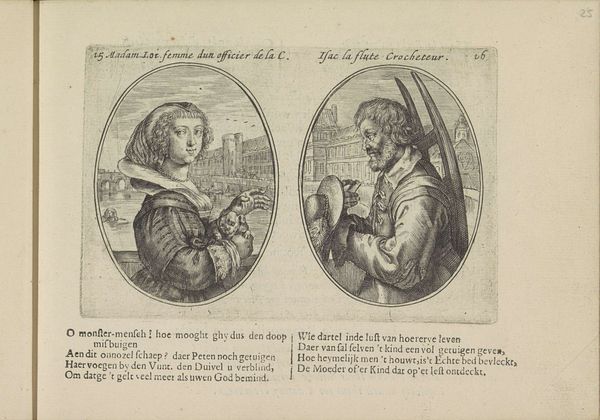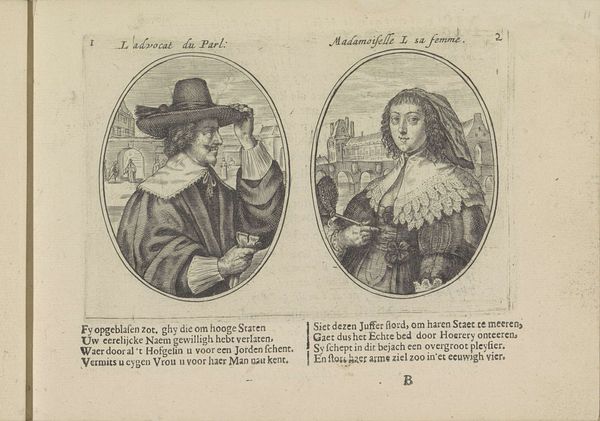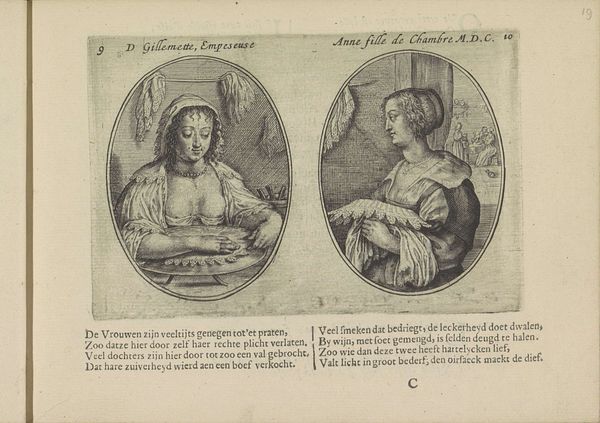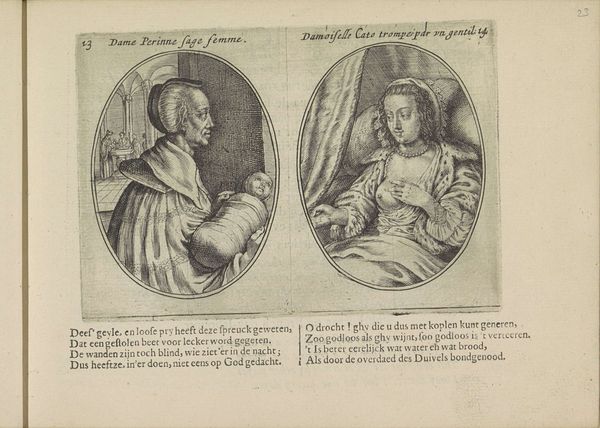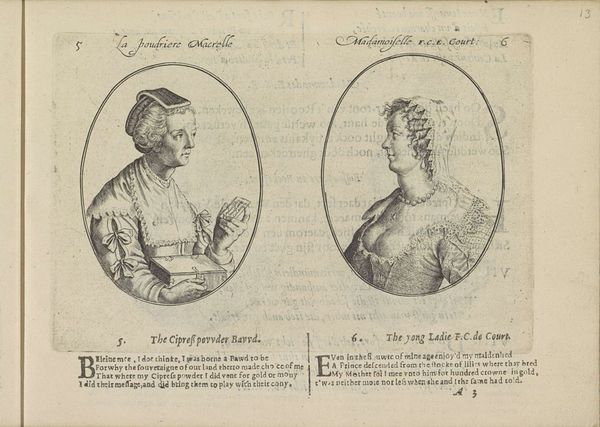
print, engraving
#
portrait
#
baroque
# print
#
genre-painting
#
engraving
Dimensions: height 97 mm, width 139 mm
Copyright: Rijks Museum: Open Domain
Editor: So this is “Blinde koppelaar en juffrouw,” or "Blind Matchmaker and Young Lady," created around 1641 by Crispijn van de Passe the Younger. It’s an engraving. Looking at this print, the composition, divided neatly in two, gives me a sort of cautionary feeling, like there's a lesson to be learned here. What do you see in it? Curator: Oh, I agree, it absolutely reeks of moralizing! This image gives us such a rich snapshot into the social anxieties of the 17th century. Think about the paired portraits; he's literally presented as "blind," right there in the French title “Le Macreau aveugle”, which can be loosely translated as the blind pimp. She is no better: her vanity prevents her from seeing the damages that vice produces. Van de Passe doesn't just give us portraits, but moral archetypes. I almost wonder: is he poking fun or condemning outright? What do you make of their placement relative to each other? Editor: That’s interesting! They’re in separate oval frames, so they don’t seem to interact at all. He’s outdoors, in a looser setting, she's within, yet confined in some manner. They are juxtaposed, but are not together... like two sides of the same coin. Perhaps about seeing appearances versus recognizing interior morals. Curator: Exactly! Consider that "the street" would have been code for brothels in those times. The artist brilliantly creates these self-contained worlds, inviting us to draw our own conclusions. Think of each frame like a stage on which vanity and vice are presented to critique. Did you notice the verses? Editor: You are right! They are Dutch and French moralising ditties: ‘sin is a cloth that blinds the eyes’ and that her ‘face’ is one that lures ‘everybody’ who offers ‘a belly full of beer’. Pretty forward stuff. I'll never look at an engraving the same way again!
Comments
No comments
Be the first to comment and join the conversation on the ultimate creative platform.
